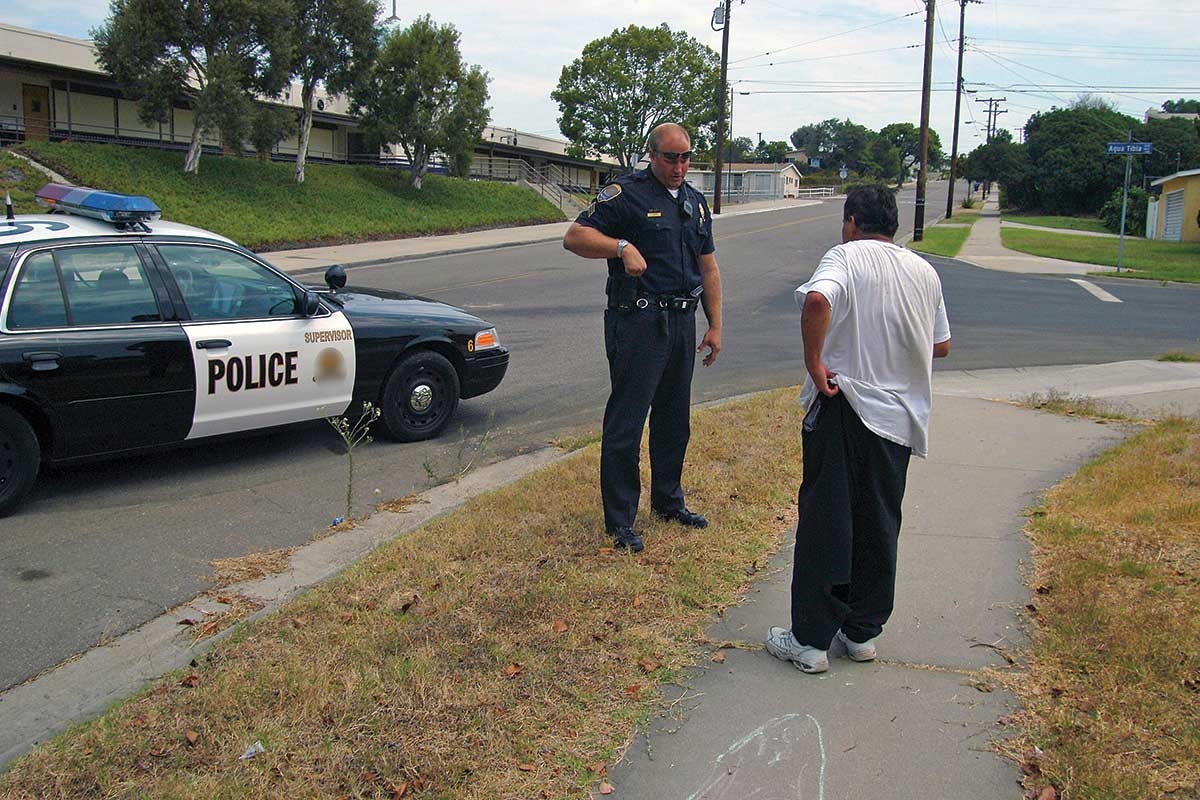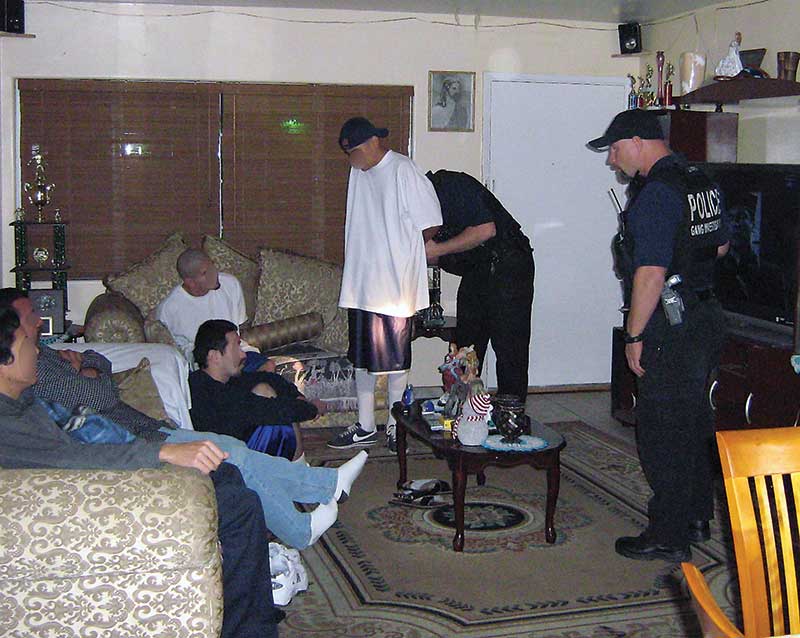
ACMJ09_ContactCover-3-800
WE DO IT FOR A REASON
We’ve been trained in the art of contact and cover for three decades now, since its creation in San Diego following the fateful Grape Street Park incident. On September 14, 1984, San Diego PD Officers Tim Ruopp and Kim Tonahill were murdered near Balboa Park, by that coward Joselito Cinco. Yet after all this time, I still see officers violate the basic tenets of contact and cover. It seems each new generation of officers finds ways to convince themselves, “it won’t happen to me.” Let’s honor the memory of our fallen officers by learning from their great sacrifice.
YOU KNOW THE RULES
We all know the big no-no’s: two officers, each searching suspects at the same time; one writes a ticket while the other searches a car; a single officer searching the car while the suspect is left alone at the curb. Let’s be honest too, these are things we’ve seen and probably done ourselves and knew them to be obvious “not to dos.”
How about the not so obvious? Like being the cover officer on a pedestrian stop and spending all your time focused on the suspect your partner is dealing with. This is one we hear about far too often. Remind yourself to watch 360 degrees. Threats have a way of coming from where you least expect it, so look around you at areas you may not have thought of. While on this point, how far away are you looking? We often forget bad guys have long guns too. Don’t limit your scanning to right around you but rather as far as you can see. Also, look up and down. Bad guys hide under cars and climb onto rooftops. What about traffic hazards? We get so worried about someone shooting us we forget about the bad driver who veers into us as we handle our business on the sidewalk.
DON’T JUST JUMP IN
Now and then we get an incident where multiple officers are dealing with a violent suspect. It’s easy for each officer to feel they need to focus on the suspect due to his level of violence. But it takes a calm, confident officer to recognize the situation and step back to handle scene security. Remember, however, to communicate this to your fellow officers.
Speaking of communication, how many contact and cover errors result from a lack of it? Too often officers assume their partner knows what they’re doing or dealing with and are then surprised when they fail to act/react to something. Don’t put each other in this position. If you’re worried about tipping the suspect off to your tactics, come up with a series of code words or phrases.
Remember, officer safety is like building an engine. You have a plan, put the pieces together, and then start fine-tuning it until it works the way it should. As any car buff knows, it always needs a little extra tweaking. Your officer safety should be the same way: you were given the plan and put the pieces together in the academy. Now for the rest of your career, you just need to keep fine-tuning it. This is what makes you a winner, not just a survivor. Stay safe and go home a winner.

















